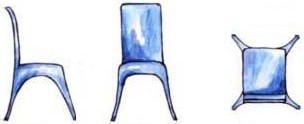Lesson overview
Outcomes
Students understand that people have different perceptions of the same phenomenon (i.e. things, people, events).
Introduction
Opinion and prejudice are based on perception. Encouraging the understanding and acceptance of the diversity of perception may lead to greater tolerance.
Activities
1. Examine different perceptions of the same object, person or events
- Present the class with a simple classroom object such as a chair.
- Ask students to write down five words or phrases to describe the object.
- Share the students observations noting the similarities and differences.
- Point out that even when an object as simple as a chair is involved there are different observations.
- Stress that none of these observations is wrong, just different.
- Show the students a picture of a scene (e.g. a country or city scene, a sports event, a war scene)
- Ask students to list three points of interest or importance about the scene and rank them.
- Ask students to share their points and comment on the reason for their choice.
- List the points on the board.
- Discuss how everybody looked at the same scene but many different points were identified as being important or interesting.
Again, stress that none of these observations are wrong, just different.
- Show students three pictures of adult males or females of about the same age but physically quite different.
- Ask students to say who the think is most attractive and why.
- Ask students who they think might find one person more attractive and why.
- Ask students to give their opinion on some recent local, national or international event.
- After students share their opinions, ask them to identify other groups of people, in their community or elsewhere, who they think would agree or disagree with them and why.
- Ask students to identify examples from their own experiences in which they encountered different perceptions or opinions of the same object, person or events. Some prompts could be.
- Differences in describing a painting or a sunset
- Differences of opinion regarding a film, television program, book or music
- Differences of opinion regarding the performance of footballers or other sportspeople
- Differences in agreement over whether or not someone is pretty or handsome
- Differences as to the merit or validity of certain political decisions
Additional strategies
With students, discuss the role that diversity in perception and opinion plays in our lives.
Use the examples already discussed, or the questions listed below.
- What would it be like if everyone had the same perceptions or opinions?
- What advantages are there in everyone perceiving things and people in the same way? What disadvantages?
- Would we want to live in a world in which we all saw things in the same way? Or all saw everything differently?

